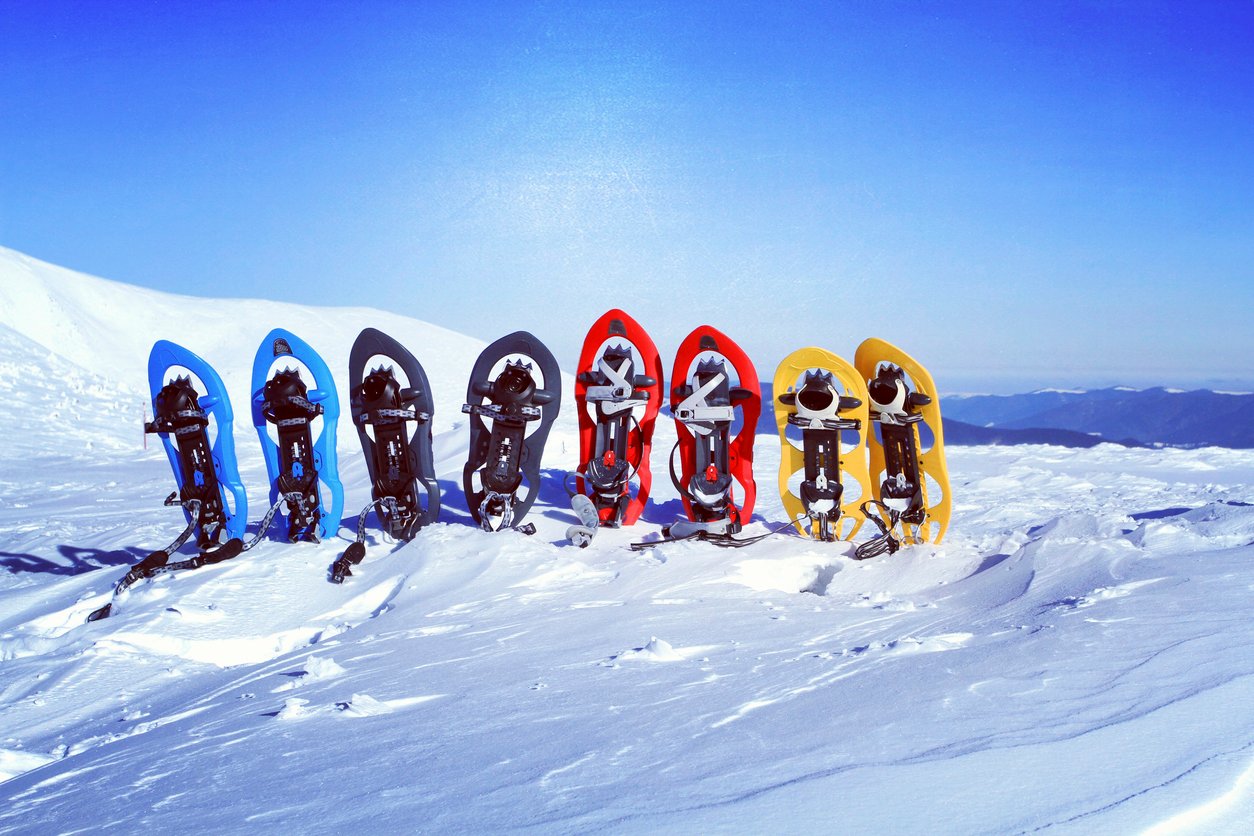
Snowshoeing is somewhere between skiing and winter hiking. Imagine a snowshoe as a friendly cousin of the crampon. Crampons are pointy and angry and serious. Snowshoes are flat, friendly and often come in bright colours. Which is great if you have a tendency to lose things, because snow is white (usually). We think snowshoeing expeditions in the hills and mountains are brilliant. You can pick it up quickly and use snowshoes to access areas that would otherwise be completely inaccessible (or just a massive pain to visit) because of the snow. Snowshoeing makes walking on the snow fun.
What is Snowshoeing?
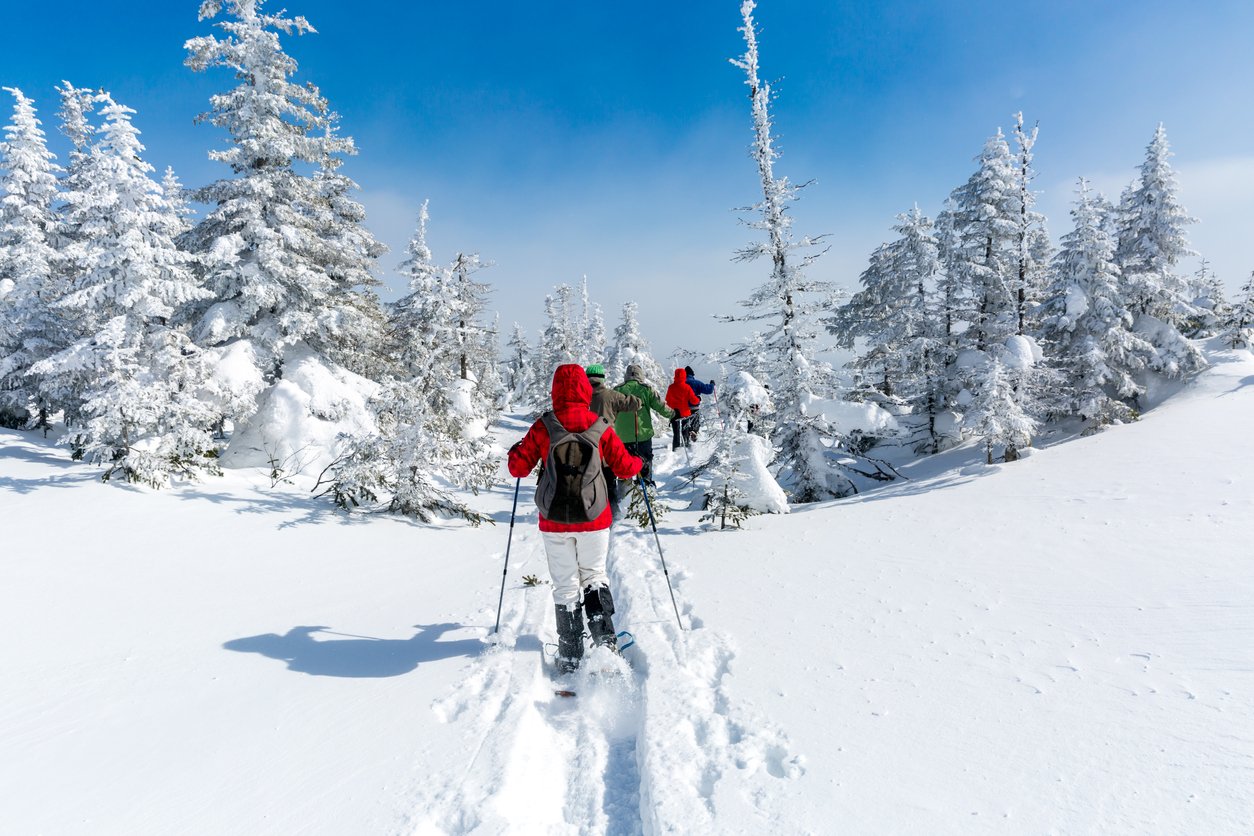
Snowshoeing is really what it sounds like: you put on shoes (of a fashion) that allow you to walk on the snow. We’ll come on to how that works later, but basically snowshoeing is when you put on snowshoes and go for a walk in the snow. It’s a bit like saying skiing or hiking-booting… which we’re sure you say all the time.
In snowy mountains, you basically have four choices of footwear:
- Winter hiking boots
- Crampons
- Skis (or ski-like things, sorry snowboarders and friends)
- Snowshoes
Each have their fortes. In general, snowshoeing can be anything from valley hikes all the way up to ski-touring style terrain. They are designed for deep snow conditions, although they can cope with some ice. Anything on snow steeper than a 30 degree-ish slope and you’ll probably want to switch into crampons. Ideally you want to be walking on snow – and soft snowy drifts at that!
How Does Snowshoeing Work?
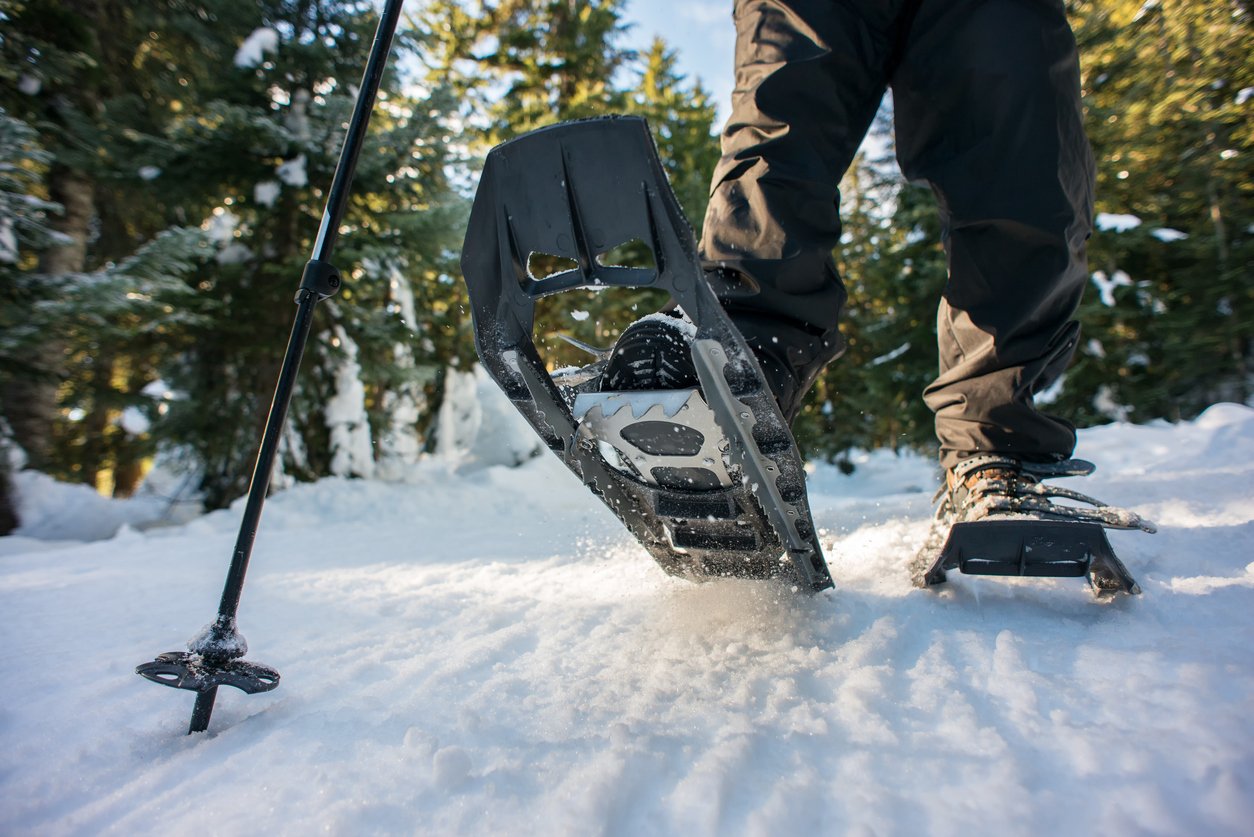
Okay. Close your eyes and imagine a deep drift of powdery snow. It’s soft and deep and left pristine by nature. Jump in it. You’ll sink right into the snow, anywhere from ankle deep to waist deep, depending on how lucky you are. This is a fun activity for about 10 minutes in your back garden. If you want to get anywhere across snow like that, sinking with each step is going to become very annoying very quickly.
Snowshoes allow you to spread your weight over a bigger surface area, so you don’t just sink into the snow when you step on it. Think of Legolas merrily walking on top of the snow over the pass of Caradhras, whilst the rest of the fellowship plowed through the drifts. Nine pairs of snowshoes could have avoided a whole load of problems in Moria… Never mind. With snowshoes, you can walk on the snow like an elf.
Many people associate snowshoeing with walking on tennis rackets. That’s because, back in the day, that’s what snowshoes used to look like. Really. The humble racket-shaped snowshoe has been refined from woven wood to rubber and metal. Most snowshoes have straps that adjust to fit any kind of walking boot and have tiny crampon teeth under the ball of your foot for added traction. You can even get specially adapted snowshoes for running or mountaineering.
What Equipment do I need for Snowshoeing?
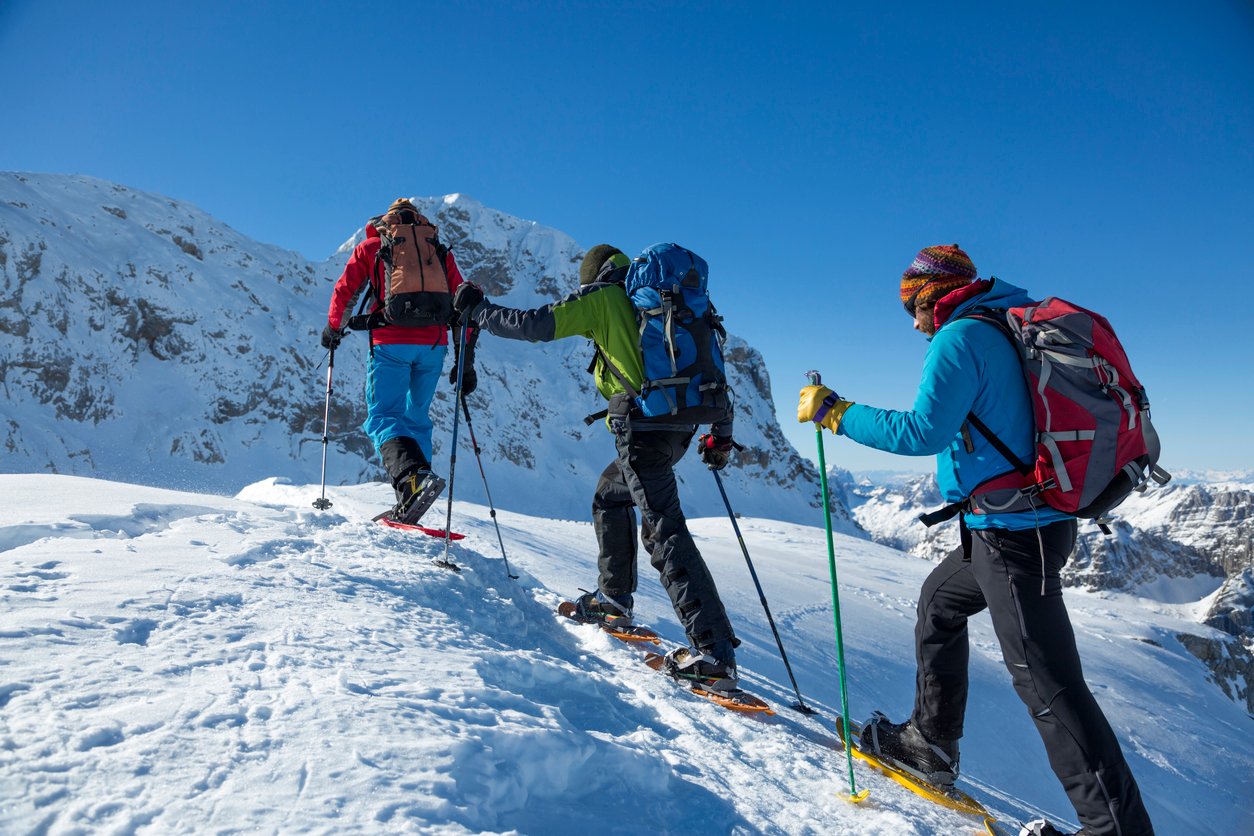
Yep, you’ve guessed it, you’re going to need some snowshoes to go snowshoeing. It’s best to buy at a shop where you can pick someone’s brains for the features of a particular snowshoe. Things to look out for are how soft the deck is and how wide, whether the crampon teeth are sharp and a hinged footplate. Some snowshoes have an extra hinge you can unfold that props your foot up for extended steep uphill sections. You probably also want to consider what the bindings are made of and whether your hiking boots will fit in them. If you get a chance, we highly recommend trying out a pair in the snow first, maybe hiring them as part of a trip. It definitely helps you understand what you’re looking for.
Aside from snowshoes and hiking boots, many people also use walking/ski poles. This is really for stability and is particularly helpful for balance whilst you’re traversing a slope. Make one pole shorter than the other and use it on the side between you and the slope. Channel your inner inbred mountain cow as you go round the mountain.
Other things you might need? Well, it’s pretty cold when the snow’s out… usually. You might want to think about warm layers – especially gloves for your hands. Those poles won’t be any use if your hands are so cold you can’t move your fingers. Snow goggles or glacier glasses can also come in handy for protecting your eyes from the weather. Plus for more mountainous exploits, an avalanche transceiver, probe and shovel are very important. You hope you’ll never use them, but better safe than lost under an avalanche to die.
Snowshoeing technique
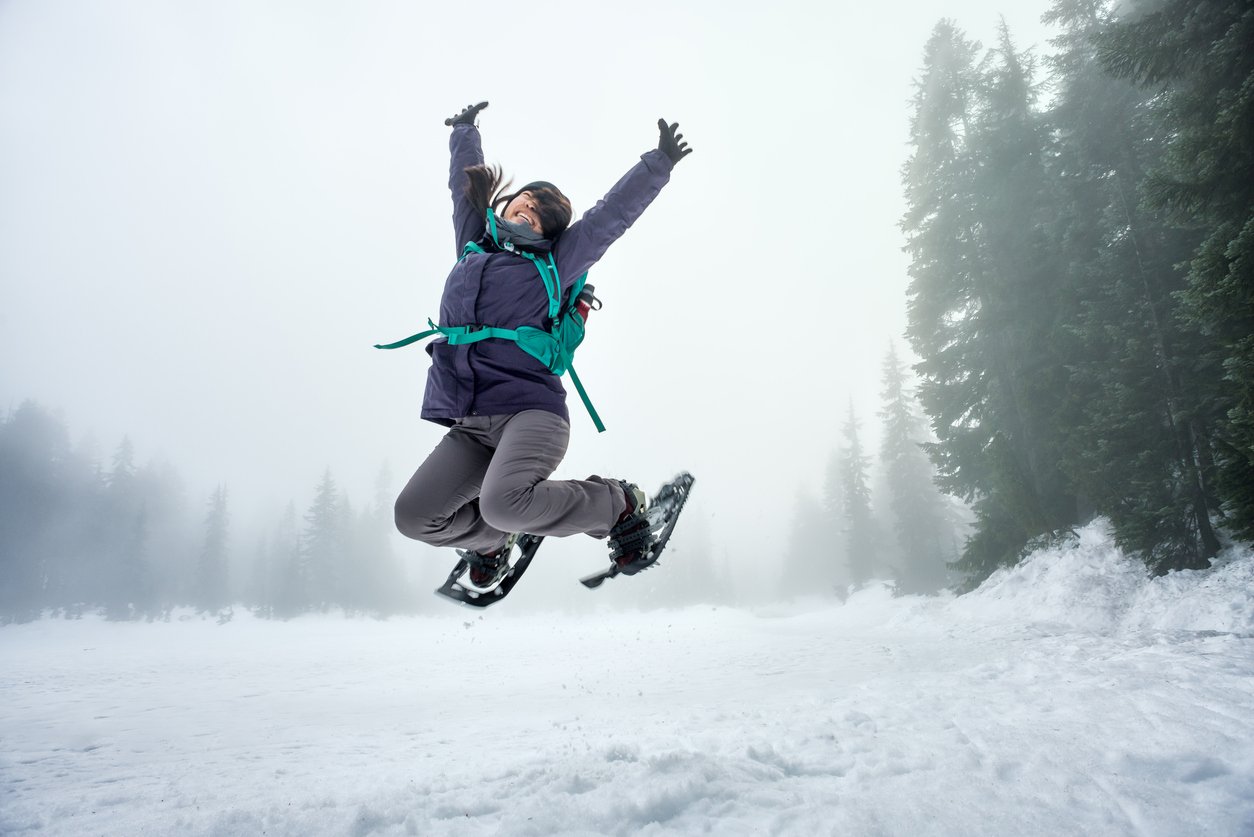
One of the best things about snowshoeing technique is that there really isn’t a lot to it. The joy of snowshoeing is that it’s pretty easy to pick up and you don’t need to spend weeks of your life ending up at the bottom of a ski run on your backside. We’re not saying you’ll never fall over, though. When you do, remember to roll onto your side or front to make it easier to get back up again. You can use the mini crampons under the ball of your foot to stop your snowshoe from sliding back down the slope.
When it comes to walking in snowshoes, the main thing to remember is that snowshoes are wider than your normal feet. Just like with crampons, you want to walk with your feet slightly further apart than normal. That stops you from putting one snowshoe down on top of the other and then simply falling over as you try to lift the bottom foot. Not too elegant.
Winter walking techniques such as “using your edges” and kicking steps can be transferred to their snowshoeing counterparts. It’s similar to skiing too really: if you have your snowshoes perpendicular to the slope, you’re less likely to end up sliding back down it as you ascend. For a better description and a full primer in snowshoeing technique, we highly recommend you get of the internet, borrow some snowshoes and give it a go! Apparently it takes most people about an hour to get to grips with the basics.
Where can I learn to Snowshoe?
Snowshoeing is very easy to learn. It’s pretty similar to walking once you get the hang of it, really! So we’re going to assume that what you really mean is, “Where can I go on my first snowshoeing adventure?” The answer is: go where the snow is. Hiring a guide for your first snowshoeing outing is well worth it. Not only can they teach you to snowshoe from scratch, but they’ll be able to take you on a more exciting route than you might have chosen on your own. Having them to keep you safe and improve your (maybe non-existent) technique is well worth it.
Need ideas for your first snowshoeing adventure holiday? You could snowshoe in the Swiss Alps, explore the Carpathians in Romania on snowshoes or go on an arctic circle adventure snowshoeing in Norway… and that’s just for starters!


